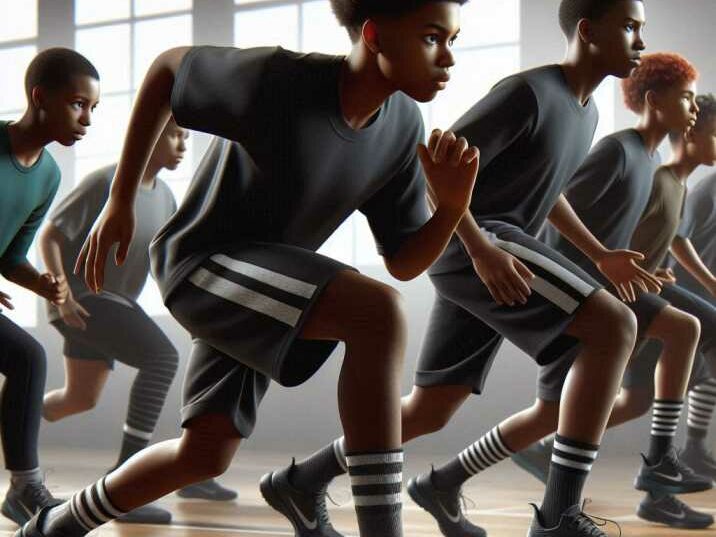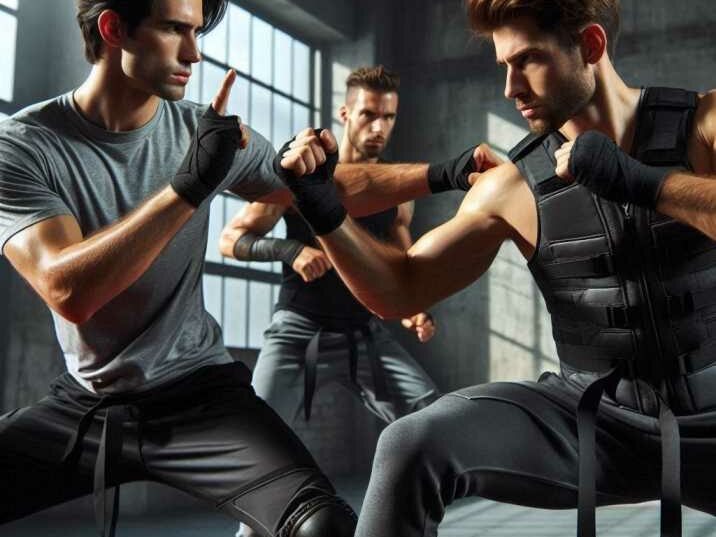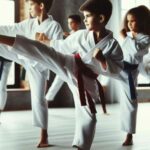Introduction:
Table of Contents
Welcome to the realm of martial arts mastery, where precision, Coordination and agility in martial arts. In this extensive guide, we’ll delve beyond the surface and explore the intricacies of specific drills tailored to elevate your martial arts prowess. Whether you’re a novice seeking to refine your techniques or a seasoned practitioner aiming for perfection, the following insights will empower you on your journey toward martial arts excellence.

Footwork Mastery: The Foundation of Martial Arts Success
Mastery of footwork is not limited to basic movements; it extends to understanding the principles of weight distribution, balance, and energy transfer. Advanced practitioners explore nuances such as the “float like a butterfly, sting like a bee” philosophy of Muhammad Ali, which emphasizes fluidity, rhythm, and unpredictability in movement. They also study footwork strategies from various martial arts disciplines, incorporating elements of fencing, ballet, and even breakdancing to expand their repertoire of movement patterns and responses.
Reaction Time Refinement: The Key to Lightning-Fast Responses
Advanced reaction training goes beyond reflex drills to encompass cognitive exercises that enhance decision-making speed and accuracy. Practitioners engage in cognitive agility drills, such as rapid-fire problem-solving tasks or memory games, to sharpen their mental acuity and processing speed. They also utilize biofeedback devices and neurofeedback training to monitor and optimize brainwave patterns associated with heightened focus and alertness, facilitating faster reaction times in combat situations.
Agility Evolution: Pushing Boundaries Beyond the Ladder
Beyond traditional agility ladder drills, advanced practitioners incorporate unconventional training tools such as Swiss balls, balance boards, and suspension systems to challenge stability, mobility, and spatial awareness. They explore multidirectional movement patterns inspired by animal locomotion, parkour, and dance, transcending linear constraints to move with fluidity and grace in any environment. Advanced agility training also emphasizes proprioceptive awareness, fine-tuning sensory perception to anticipate and adapt to dynamic stimuli with precision and efficiency.
Core Stability: The Silent Engine of Martial Arts Proficiency
In addition to core strengthening exercises, advanced practitioners integrate breathwork techniques such as diaphragmatic breathing and rhythmic exhalation to optimize energy transfer and minimize tension during movement. They also incorporate isometric holds, dynamic contractions, and eccentric loading to challenge core stability in various planes of motion, replicating the dynamic demands of martial arts techniques. Advanced core stability training fosters a deep connection between mind and body, enabling practitioners to move with fluidity, power, and resilience in the face of adversity.
Precision Strikes: The Art of Target Acquisition
Advanced striking drills emphasize timing, distance management, and angle manipulation to exploit openings and vulnerabilities in opponents’ defenses. Practitioners study the biomechanics of striking techniques, optimizing joint alignment, muscle activation, and kinetic chain sequencing to maximize power and accuracy. They also explore psychological tactics such as feints, fakes, and psychological warfare to deceive opponents and create strategic advantages in combat. Mastery of precision strikes requires not only technical proficiency but also tactical awareness and psychological resilience under pressure.
Weapons Proficiency: Harmonizing Body and Blade
Weapons training encompasses not only technical proficiency but also historical and cultural appreciation for the martial traditions from which they originate. Advanced practitioners study weapon dynamics, physics, and ergonomics to understand the principles of leverage, momentum, and timing inherent in weapon-based combat. They also delve into the philosophical and ethical dimensions of wielding lethal force, cultivating mindfulness, restraint, and reverence for life. Advanced weapons proficiency transcends mere physical skill, embodying the warrior ethos of discipline, honor, and integrity in both practice and application.
Mind-Body Synergy: Unleashing the Power of Mental Coordination
Mental coordination is cultivated through mindfulness practices such as meditation, visualization, and sensory awareness training. Advanced practitioners explore the concept of “mushin” or “no-mind,” a state of heightened awareness and spontaneous action unencumbered by conscious thought or ego. They also integrate principles of Zen Buddhism, Taoism, and other philosophical traditions to cultivate mental resilience, emotional equanimity, and spiritual insight. Mastery of mind-body synergy enables practitioners to move with effortless grace, adaptability, and intuition, embodying the timeless wisdom of martial arts philosophy in every aspect of their lives.

Table of Information: Drills to Enhance Coordination and Agility in Martial Arts
| Drill Type | Description | Benefits | Example Drills |
|---|---|---|---|
| Footwork Drills | Focus on movement patterns to improve stance, balance, and agility. | Enhances balance, speed, and maneuverability. | L-Step, Shuffle Step |
| Reaction Time Exercises | Aim to improve responsiveness and quick decision-making in combat situations. | Sharpens reflexes and anticipation. | Mirror Drill, Light Cue Drills |
| Balance Challenges | Exercises that strengthen stabilizing muscles and improve proprioception. | Improves stability and execution precision. | Single-Leg Balance, Balance Board Exercises |
| Coordination Drills | Synchronize different body parts to perform complex, fluid movements. | Enhances fluidity and timing of techniques. | Shadowboxing, Combination Drills |
| Agility Challenges | Develop speed, quickness, and dynamic movement patterns for better performance. | Increases speed, agility, and dynamic movements. | Agility Ladder Drills, Plyometric Exercises |
| Hand-Eye Coordination Exercises | Focus on synchronizing visual input with hand movements for precise strikes and defensive actions. | Enhances timing, accuracy, and overall performance. | Focus Mitt Drills, Speed Bag Training |
L-Step: Moving in the shape of an L, focusing on maintaining proper stance and balance.
Shuffle Step: Quick lateral movements to improve agility and reaction time.
Mirror Drill: Partners mimic each other’s movements to enhance reflexes and accuracy.
Light Cue Drills: Using visual stimuli to improve reaction time.
Single-Leg Balance: Standing on one leg to strengthen stabilizing muscles.
Balance Board Exercises: Using unstable surfaces to challenge balance and proprioception.
Shadowboxing: Practicing various strikes and defensive maneuvers in fluid motion.
Combination Drills: Performing sequences of techniques consecutively, challenging coordination and timing.
Agility Ladder Drills: Quick footwork through ladder rungs to enhance agility and foot speed.
Plyometric Exercises: Explosive movements like jump squats to develop power and reactive strength.
Focus Mitt Drills: Striking specific targets with speed and accuracy to improve hand-eye coordination.
Speed Bag Training: Rapid punches on a speed bag to enhance timing, rhythm, coordination and agility.
Conclusion:
In Conclusion, Drills to enhance coordination and agility in martial arts, Mastering coordination and agility is fundamental to excelling in martial arts. By incorporating these specific drills into your training routine, you can enhance your skills and elevate your performance to new levels. Remember, consistency and dedication are key to progress in martial arts, so keep practicing and striving for improvement with each session.
Frequently Asked Questions:
What are the benefits of agility training in martial arts?
Agility training improves speed, quickness, and dynamic movement patterns, enhancing overall performance and responsiveness in combat situations.
How often should I incorporate coordination drills into my martial arts training?
It’s recommended to incorporate coordination drills into your training routine at least 2-3 times per week to see noticeable improvements in coordination and fluidity of movement.
Are balance challenges suitable for beginners in martial arts?
Yes, balance challenges can benefit practitioners of all levels by strengthening stabilizing muscles and improving proprioception, essential for executing techniques with precision and efficiency.
Can hand-eye coordination exercises help with sparring skills?
Absolutely, improving hand-eye coordination enhances timing, accuracy, and defensive reflexes, translating directly to improved performance in sparring and combat situations.
How can I make agility ladder drills more challenging?
To increase the difficulty of agility ladder drills, try increasing the speed of movement, incorporating complex footwork patterns, or adding resistance bands for added resistance and proprioceptive feedback.


